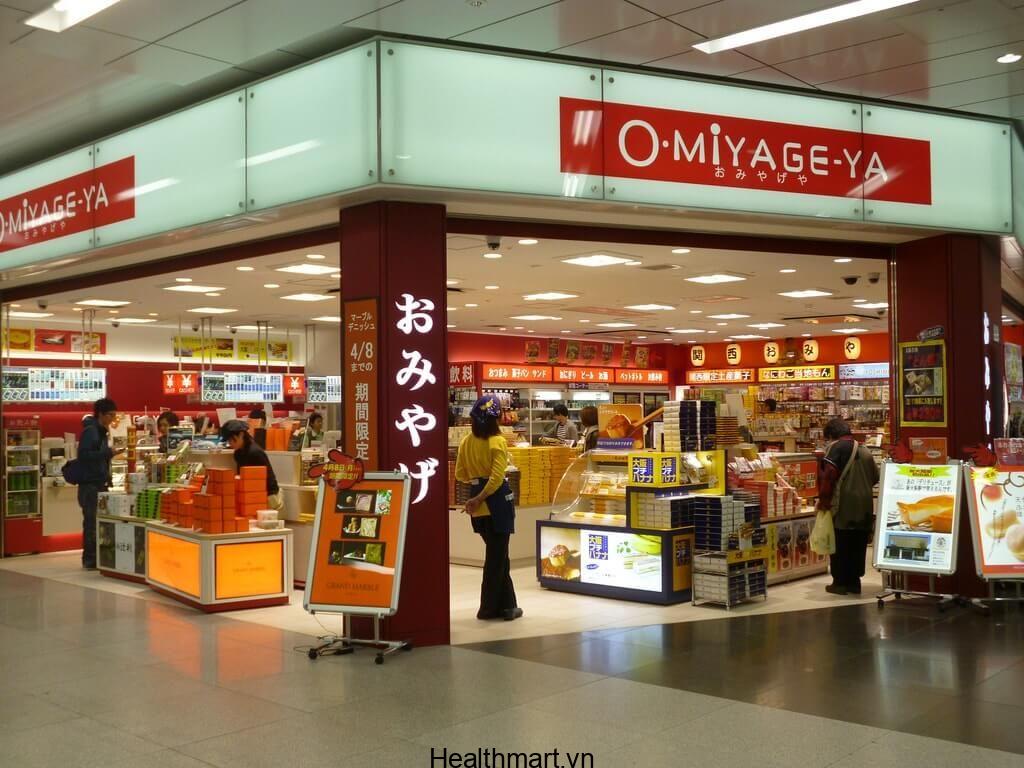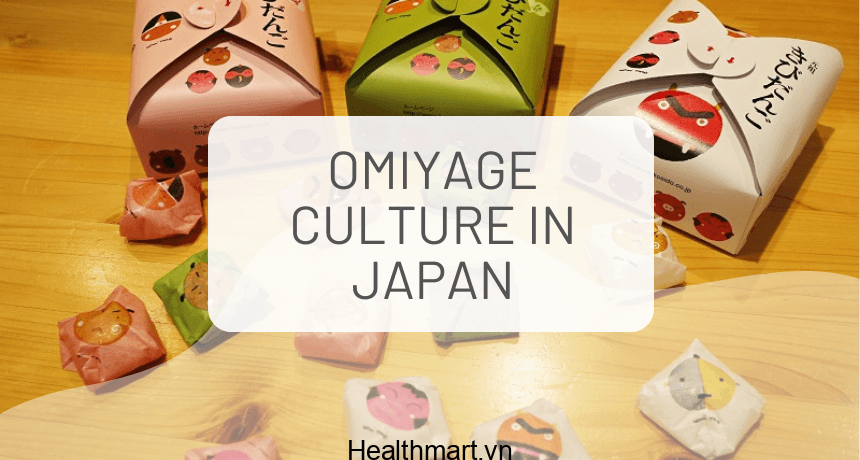No products in the cart.
En
Bring Japan Home With Unique Omiyage Dishes From 47 Provinces And Cities
Bring Japan Home With Unique Omiyage Dishes From 47 Provinces And Cities

Omiyage is a Japanese custom of bringing back souvenirs for friends and family after traveling. These gifts often reflect the local area, showcasing the unique flavors and traditions of a particular region. From sweet treats to savory snacks, there’s an omiyage for every taste bud and occasion. If you’re looking to bring a piece of Japan back home with you, look no further than these unique omiyage dishes from 47 provinces and cities.

Exploring Regional Delights: A Culinary Journey Through Japan

Japan’s diverse landscape and history are reflected in its regional cuisines. Each prefecture boasts its own distinct specialties and ingredients, creating a vibrant tapestry of flavors across the archipelago. From Hokkaido’s seafood bounty to Okinawa’s tropical sweetness, Japan’s culinary map is a treasure trove waiting to be discovered.
Hokkaido:
- Shiroi Koibito (White Lover): These delicate cookies are a classic Hokkaido omiyage. Made with white chocolate and butter, they are a sweet and buttery delight.
- Hokkaido Milk Pudding: Made with fresh Hokkaido milk, this creamy pudding is a light and refreshing treat.
- Hokkaido Melon: Known for their sweetness and aroma, Hokkaido melons are a prized summer fruit.
- Sea Urchin: Freshly caught from the pristine waters of Hokkaido, sea urchin is a prized delicacy.
- Hokkaido Cheese: Made with fresh milk from Hokkaido’s dairy farms, this cheese is known for its rich flavor and quality.
Kyoto:
- Yatsuhashi: These traditional Japanese sweets are made from glutinous rice flour and come in a variety of flavors, including cinnamon and matcha.
- Green Tea Sweets: Kyoto is famous for its green tea, and this is reflected in its many green tea sweets, such as matcha mochi and matcha ice cream.
- Kyoto-style Tofu: Kyoto’s tofu is known for its delicate texture and subtle flavor.
- Yuzu: Kyoto’s yuzu citrus fruit is known for its unique aroma and flavor. It is used in a variety of dishes and drinks.
- Senbei Rice Crackers: These savory rice crackers are often flavored with soy sauce, sesame seeds, or seaweed.
Sweet Treats and Savory Snacks: A Taste of Japan
Omiyage often includes a mix of sweet and savory treats, each representing the local culinary traditions and ingenuity. From traditional sweets to modern confections, these edible souvenirs offer a taste of Japan’s rich cultural heritage.
Tokyo:
- Tokyo Banana: These banana-shaped cakes filled with banana custard cream are a popular Tokyo omiyage.
- Hi-Chew: These chewy candies come in a variety of fruity flavors and are a popular choice for children and adults alike.
- Kinoko no Yama (Mushroom Mountain) and Takenoko no Sato (Bamboo Shoot Village): These popular chocolate-covered snacks are a fun and playful omiyage.
- Melon Pan: This sweet bread is topped with a crunchy cookie crust and is a popular treat enjoyed throughout Japan.
- Tokyo-style Curry Rice: Tokyo’s unique curry style is a popular takeout option and comes in a variety of flavors.
Kanagawa:
- Kamaboko: These steamed fish cakes come in a variety of shapes and flavors and are a popular omiyage from Kanagawa.
- Shonan Hiratake: These flat, crispy rice crackers are made from rice flour and seasoned with soy sauce.
- Hakone Onsen Manju: These steamed buns are filled with sweet bean paste and are a popular omiyage from Hakone.
- Sashimi: Kanagawa is known for its fresh seafood, and sashimi is a popular omiyage for those looking for a taste of the region.
- Ramen: Kanagawa is home to numerous ramen shops, and ramen is a popular omiyage for those seeking a hearty and flavorful meal.
Uncovering Local Secrets: Beyond the Main Tourist Attractions
While major cities like Tokyo and Kyoto offer a plethora of omiyage options, venturing beyond the well-trodden tourist paths reveals a treasure trove of hidden gems. Smaller towns and rural areas often boast unique specialties and local flavors that reflect the uniqueness of the region.
Fukuoka:
- Hakata Mentaiko: These spicy cod roe are a Fukuoka specialty and are often enjoyed as a topping for rice or noodles.
- Hakata Ramen: Known for its rich pork broth and thin noodles, Hakata ramen is a popular dish in Fukuoka.
- Hakata Melonpan: These melonpan from Fukuoka are often filled with sweet bean paste or custard cream.
- Umeboshi (pickled plums): Fukuoka is known for its high-quality umeboshi, which are often used as a condiment or eaten as a snack.
- Yatai (street food stalls): Fukuoka is famous for its yatai, where you can find a variety of local specialties.
Hiroshima:
- Okonomiyaki: This savory pancake is a Hiroshima specialty and is made with cabbage, noodles, and meat.
- Hiroshima-style Oyster: These oysters are known for their plump size and delicate flavor. They are often served grilled or fried.
- Momiji Manju: These maple-leaf-shaped buns are filled with sweet bean paste and are a popular omiyage from Hiroshima.
- Hiroshima Lemon: Hiroshima is known for its juicy and fragrant lemons. These lemons are used in a variety of dishes and drinks.
- Hiroshima Carp: Hiroshima is known for its professional baseball team, the Hiroshima Carp, and Carp-themed omiyage are popular among fans.
Beyond Traditional Souvenirs: Modern Takes on Classic Flavors
In recent years, a new wave of omiyage has emerged, featuring modern interpretations of classic flavors and innovative creations. These contemporary treats showcase the creativity and skill of Japanese confectioners and offer a fresh perspective on traditional Japanese cuisine.
Osaka:
- Takoyaki: These savory octopus balls are a popular street food in Osaka. They are often filled with octopus, tempura scraps, and green onions.
- Ikayaki: This grilled squid is a popular street food in Osaka. It is often served with a dipping sauce.
- Dango (mochi balls): Dango are made from mochi flour and are often served on skewers. They are a popular snack and dessert.
- Kushikatsu: These deep-fried skewers are a popular street food in Osaka. They are often made with meat, seafood, or vegetables.
- Osaka-style Okonomiyaki: Osaka’s okonomiyaki is known for its thick batter and savory flavors.
Nagasaki:
- Castella: This sponge cake is a Portuguese-influenced treat that has become a popular omiyage from Nagasaki.
- Champon: This noodle soup is a Nagasaki specialty and is made with pork, seafood, and vegetables.
- Shimabara Kue: These colorful and intricate traditional sweets are made from rice flour and sugar. They are often used as decorations during festivals.
- Nagasaki Chanpon: This noodle soup is a Nagasaki specialty and is made with pork, seafood, and vegetables.
- Shinsengumi Omiyage: Nagasaki is home to the Shinsengumi, a famous samurai group, and you can find many Shinsengumi-themed omiyage.
The Gift of Taste: Sharing a Piece of Japan
Omiyage is more than just a souvenir; it’s a gesture of appreciation and a way to share a piece of Japan with loved ones. Whether you’re looking for traditional treats, modern creations, or local specialties, there’s an omiyage out there to suit every taste and budget. So, on your next trip to Japan, don’t forget to bring back some unique and delicious omiyage to share the flavors of Japan with the people you love.
Conclusion:
From the snowy mountains of Hokkaido to the vibrant streets of Tokyo, Japan offers a diverse range of omiyage options, each reflecting the unique culinary heritage of its different regions. Bringing back omiyage is not just about collecting souvenirs but about experiencing the flavors of Japan and sharing a piece of its culture with friends and family. The next time you’re planning a trip to Japan, remember to explore the local markets and shops to discover unique and delicious omiyage that will bring back memories of your travels long after you’ve returned home.
Keywords:
- Omiyage
- Japanese Souvenirs
- Regional Cuisine
- Culinary Delights
- Japanese Culture


I’m not sure about this. It seems like a lot of work to find all these different dishes. I’m just going to stick to the usual souvenirs.
So you’re telling me I can bring home a whole mini-fridge of omiyage? That’s amazing! I’m going to be the coolest person at work.
I’m not sure if I’d want to eat all this food. It’s probably really unhealthy. But I guess it’s a good way to support the local economy.
I didn’t know there were so many different kinds of omiyage! I’m going to have to check this out next time I’m in Japan.
Wow! This is so cool! I love trying new foods from different places. I can’t wait to try all of these omiyage dishes!
This article is so boring. I’m just going to scroll through my Instagram feed instead.
This is ridiculous! Why would anyone want to bring home all this food? It’s going to spoil! Just buy some cute trinkets instead.
This is a great idea! I’m going to start collecting omiyage from every place I visit. It’ll be like a culinary scrapbook of my travels.
I’m sure these omiyage dishes are delicious, but I’m not sure I could stomach them after a long flight.
I can’t believe they left out [insert specific dish]! That’s my favorite omiyage from [insert specific region].
This article is great! I love learning about different cultures and their food traditions. I’m definitely going to try some of these omiyage dishes next time I’m in Japan.